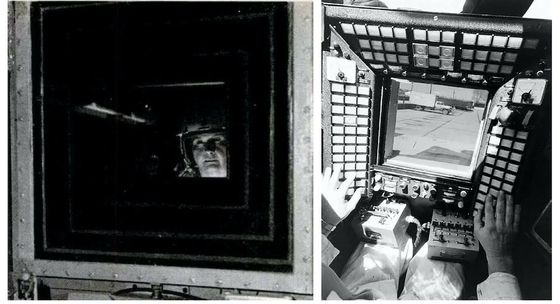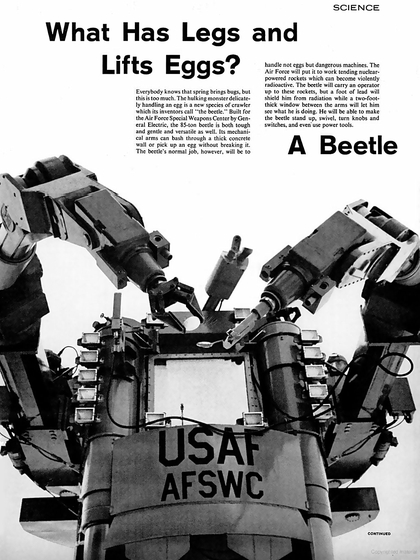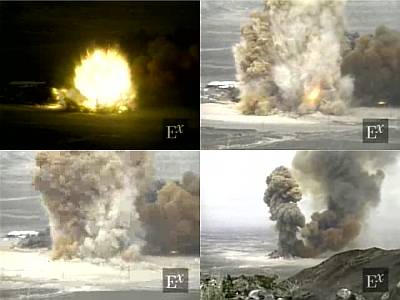What is the giant robot 'Beetle' developed by the US Air Force over 60 years ago?

'Giant manned robots' appear in science fiction movies and anime, but in reality they have been seriously developed. Orangebean, an overseas blog, explains the manned robot 'Beetle ' developed by the US Air Force Special Weapons Center in the 1960s.
When America Had an Atomic Mecha Warrior Robot | OrangeBean Indiana
In the 1950s, nuclear power was expected as a 'dream energy.' The United States, which was in the Cold War with the former Soviet Union at the time, envisioned a nuclear bomber to drop a nuclear bomb on Moscow far away, assuming nuclear power as its driving force.
However, nuclear bombers that can travel long distances are extremely large, and a huge nuclear reactor is required to fly a huge bomber with nuclear power. When mounting a huge nuclear reactor on an airplane, it is necessary to mount a shield so that the human crew is not affected by radiation. As a result, nuclear-powered nuclear bombers are expected to be out of specification, but the size and power of humans makes it very difficult to maintain such a huge nuclear bomber.

Furthermore, considering the maintenance of a bomber equipped with a nuclear reactor, there is a risk that a human mechanic will be exposed to intense radiation. In the 1940s, there were two accidents in which scientists died in experiments using plutonium lumps, and the military also knew what would happen to humans if exposed to strong radiation. rice field.
How did the scientists exposed to the 'demon core' die?-GIGAZINE

Therefore, a giant robot beetle was developed by a subsidiary of General Electric to enable human mechanics to maintain a huge nuclear bomber while protecting themselves from radiation.
The beetle, which is 27 feet tall and weighs 77 tons, is an M42 Duster self-propelled anti-aircraft gun with a lower body and two manipulators with a cylindrical upper body and a power of 85,000 pounds (about 39 tons). It is a self-propelled robot arm with.

The Beetle was developed for the purpose of 'maintenance of a bomber propelled by nuclear power' at a cost of three years and 1.5 million dollars (about 1.7 billion yen in terms of modern monetary value). Therefore, people can get in and operate the upper body, but lead-containing glass and iron plates with a thickness of about 60 cm are pasted on the front and left and right, and the surrounding situation is checked with a TV camera and a periscope. I was able to do it.

Immediately after the Beetle was developed , Martin Mann, a reporter in the scientific journal 'Popular Science ' published in 1962, said, 'The Beetle is a versatile robot that solves the national nuclear problem. Beetles exist for removal, rescue of victims of nuclear bombs, etc. ', and it can be seen that they received a lot of attention even at that time.

by James Vaughan
But the Beetle wasn't without its problems. The U.S. Air Force was plagued by a series of operational problems, including fuel path failures, oil squirting due to loose plugs, arm diode breaks, auxiliary generator outages, and repeated shorts. And because the development of the nuclear bomber itself was delayed, the development of the beetle was also stopped, and it was finally thrown away as 'confidential waste' at the Nevada nuclear test site where the last nuclear test was conducted in the United States. It has been done.
However, the development of the beetle was not wasted, and the manipulator of the beetle contributed greatly to the development of the robot hand. In fact, Beetle's manipulator technology led to the invention of the Remote Underwater Manipulator (RUM) for deep-sea submersibles, which was the prototype of the arm of the manned deep-sea submersible 'Alvin' that explored the Titanic in 1986. It has become.
Related Posts:







